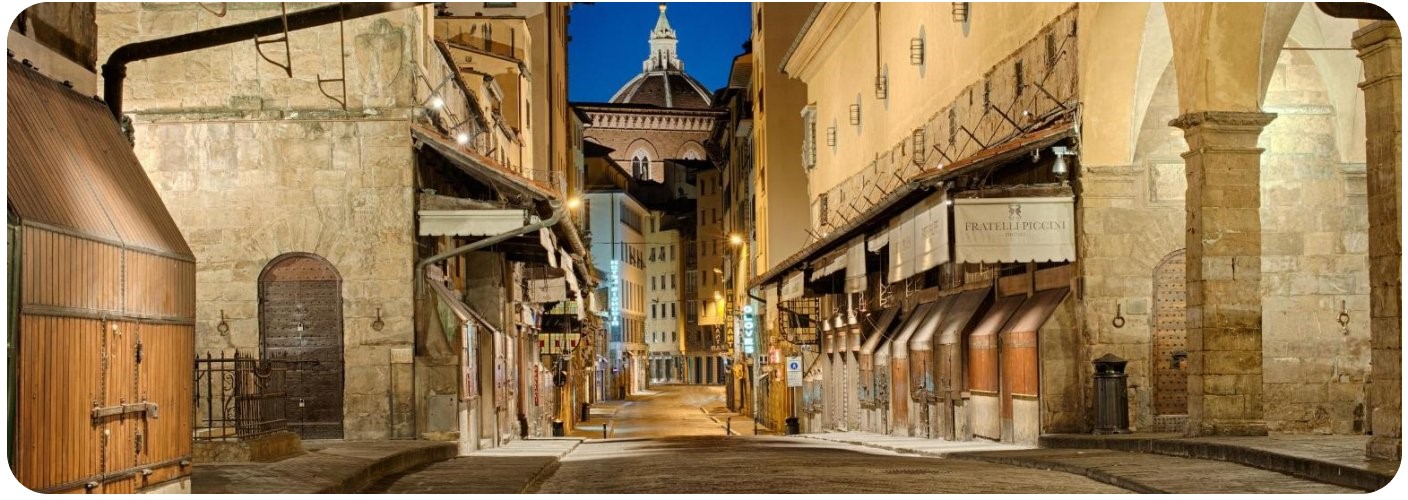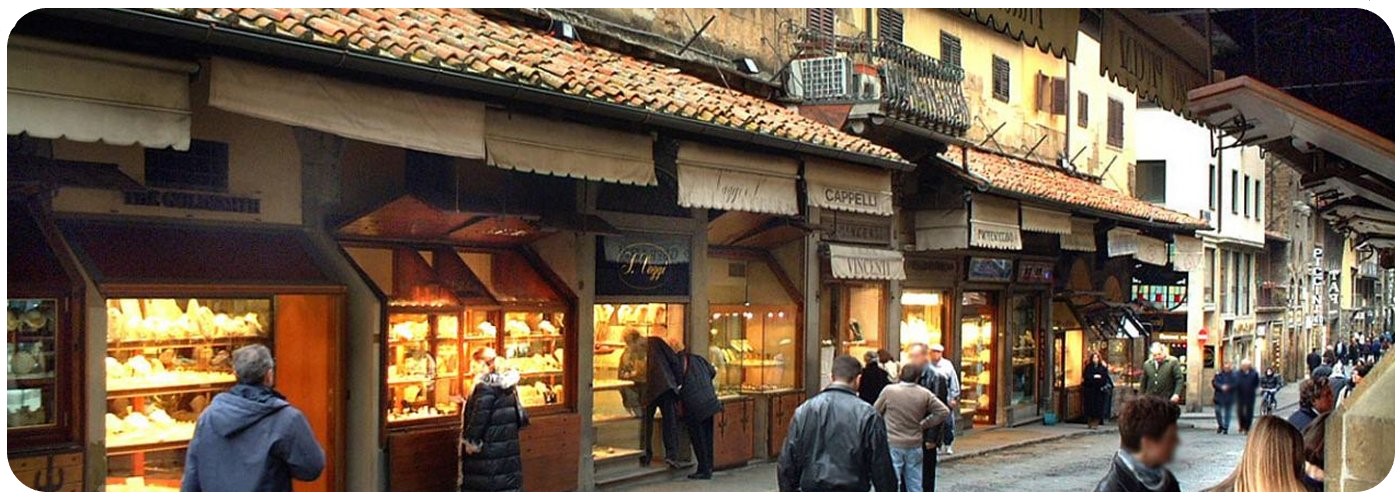The Ponte Vecchio
Ponte Vecchio is a medieval stone arch bridge over the Arno River. This bridge is famous for the shops on it since the Middle Ages.
Originally the shops were occupied by butchers but now they are mostly jewelers and art dealers. The other bridges close to the Ponte Vecchio are the Ponte alle Grazie and the Ponte Santa Trinita.

The history of the Ponte Vecchio
The first appearance in the documents dates back to 996 AD, although it is believed that before it there was another bridge built in Roman times. The bridge crosses the Arno river at its narrowest point, in the same area where the Roman Via Cassia passed. Originally the Roman piers were in stone and the superstructures in wood.
In 1117 the Ponte Vecchio was destroyed by a flood and then rebuilt in stone, but in 1333 the two central pillars were swept away and only twelve years later, in 1345, the Florentines rebuilt the bridge. Giorgio Vasari, a Florentine artist and historian, attributes the Ponte Vecchio project as we see it today to the artist Taddeo Gaddi, who was one of the most important Florentine artists and a member of Giotto's workshop.
According to modern historians, however, the architect who designed the Ponte Vecchio was Neri di Fioravanti, who worked and lived in Florence in the fourteenth century. On 4 August 1944 the Ponte Vecchio was in danger of being destroyed again by the retreat of the Germans, but fortunately it was spared (unlike all the other bridges in Florence).
The Germans however destroyed the buildings at both ends, thus obstructing access to the bridge. The buildings were then rebuilt, using a combination of original and modern design.

The structure of the Ponte Vecchio
The Ponte Vecchio, a stone closed-spandrel segmental arch bridge, consisting of three segmental arches: the main one has a span of 30 meters (98 feet) and the two side arches each span 27 meters (89 feet). The rise of the arches is between 3.5 and 4.4 meters (11½ to 14½ feet).
In the central opening of the bridge there is a little loggia with a dedication stone which once read in Italian: “In 1333 the bridge fell down because of a storm, then after 10 years as the Comune wished, it was reconstructed with this ornamentation“.
Like it happened with the Basilica of Santa Croce, also the Ponte Vecchio was severely damaged in the 1966 flood of the Arno.
The Vasari Corridor on the Ponte Vecchio
In 1565 Cosimo de’ Medici the duke of Florence, in order to connect the Palazzo Vecchio (Florence’s town hall) with the Palazzo Pitti, commissioned to Giorgio Vasari the construction of a structure that ran also above the Ponte Vecchio, it was called the Corridoio Vasariano (Vasari Corridor).

The shops on the Old Bridge and the origins of bankruptcy
The Ponte Vecchio has always hosted a big variety of shops and merchants. After the authorization of the Bargello (a sort of police authority), they displayed their goods on tables before their premises.
The retrobotteghe (back shops) that are visible from upriver, were added in the seventeenth century. Legend says that the word and the economic concept of bankruptcy have their origins on the Ponte Vecchio.
In the past it happened that if a money-changer was not able to pay his debts, the banco (table) on which he sold his wares, was physically broken (rotto) by soldiers. This practice was called bancarotta, which literally means “broken table”, so the merchant without his table was not able to sell anything and his activity failed.
Some years later in 1595 in order to enforce the prestige of the bridge, with a decree the authorities prohibited butchers (whose corporative association had monopolized the shops on the bridge since 1442) to work there and their place was immediately taken by several gold merchants.
The guides of our walking tours will be very happy to show you the Ponte Vecchio, one of the beauties of Florence.